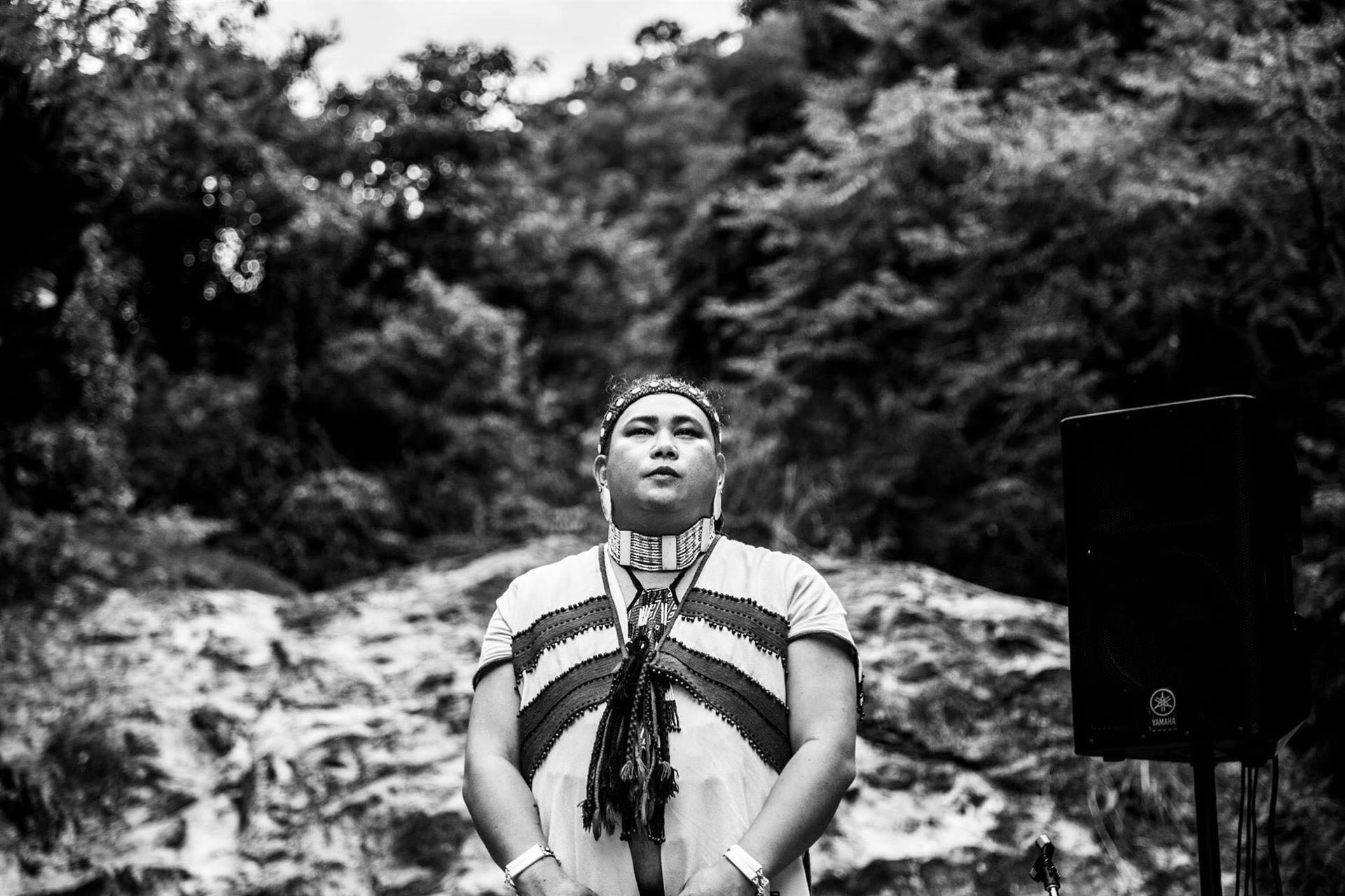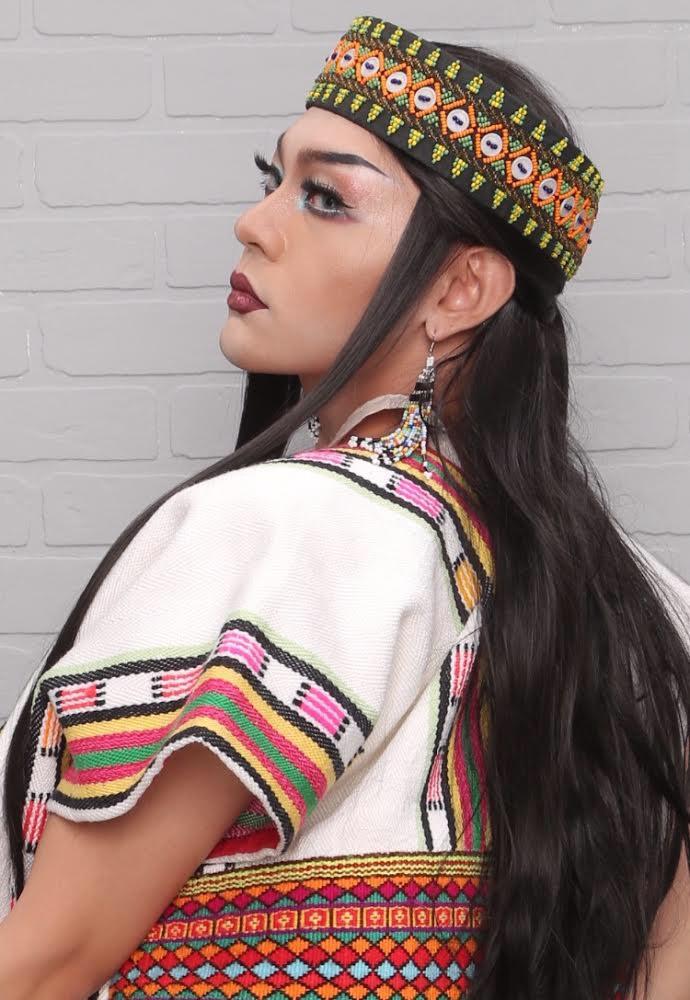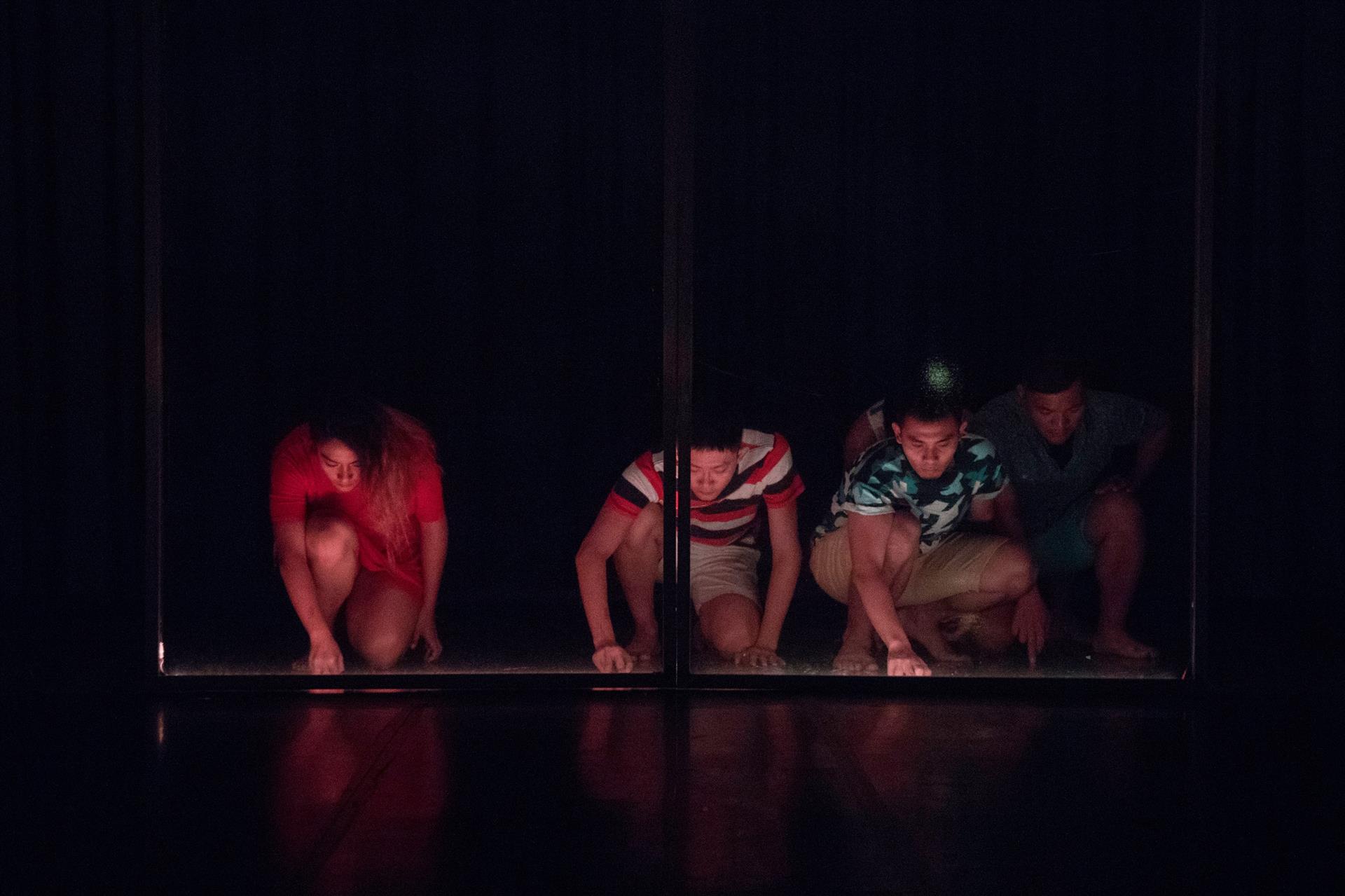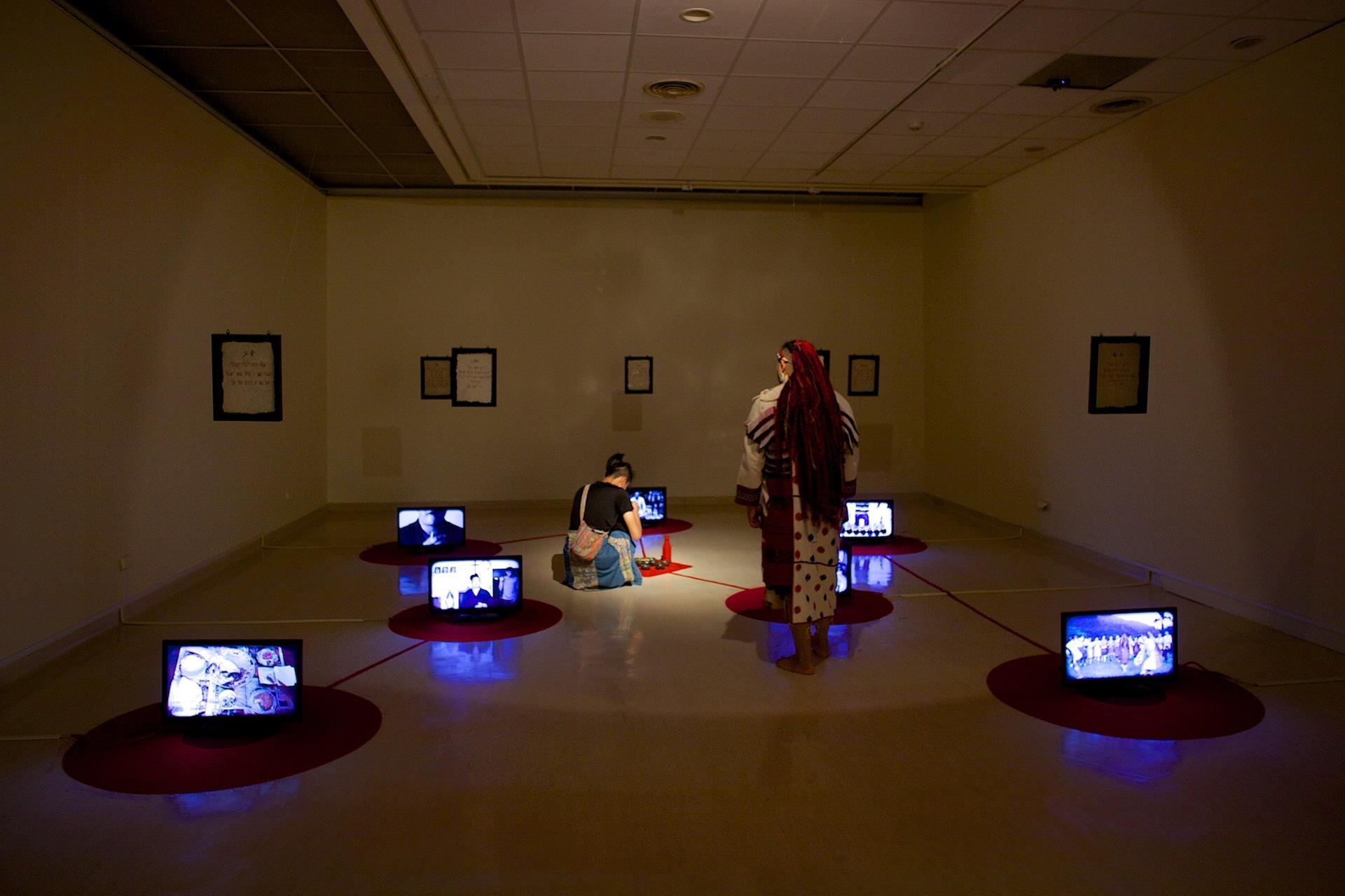Gender, Taboo, Community
A Preliminary Exploration of Indigenous Artists’ Views of Gender
2017/10/05
Written by Lu Hong Wun
 Artist Dondon Houmwm
Photo provided by Dondon Houmwm
Artist Dondon Houmwm
Photo provided by Dondon Houmwm
Dondon Hounwn is the first name people would think of when it comes to gender issues in indigenous artists’ works. However, when he disagrees with the subject of this interview and says: ‘I don’t really focus on gender. Of course, one can feel the power of écriture feminine in my works but I don’t like to advertise that. It is all natural to me, that’s what I’d like to stress.’
Interestingly enough, this ‘natural’ quality that Dondon mentions also exists in other artists too. Their art work and life are extensively attached and indivisible. Artists reveal themselves through their creation as a reminder to viewers: their work is equivalent to their life.
This philosophy derives from artists’ self-identification. Drag queen Vilian Nangavulan from Bunun shares his story about it. Nangavulan had a drag performance at a rally for supporting same sex marriage equality this year. It is a song mixed with Malastapang which is an ancient tune for celebrating successful hunting in Bunun culture. He found out later that there were a group of indigenous people performed Malastapang at an anti-gay marriage gathering in 2015. They consider Malastapang is masculine and perfect example of how men should be. It’s their way to tell people that being gay is not welcome in indigenous culture.
 Drag Queen - Feilibing IceQueen
Photo provided by Feilibing IceQueen
Drag Queen - Feilibing IceQueen
Photo provided by Feilibing IceQueen
This one tune with respective interpretations reflects the LGBT or sexual minority people’s predicament. Dondon tries to look at it from his Truku root, Gaya.
It seems normal to the Elder. In traditional society, it is simply one’s personality, his character. For my parents’ generation, however, they learned from either church or school that it has to be differentiated clearly. That is why they oppose sexual diversity. But we know that it is liberal, it used to be liberal in community. What is right then? I believe there is a process of it.
Take religion for example, the Elder went to churches for there the resources were. They still held their traditional belief, Gaya. Yet it became to a dilemma for my parents’ generation: believe in church or in Gaya? Years later, for young generation, Gaya is understood as a natural, long-existing ancient living rules. Whatever being forbidden in church, it is accepted in Gaya; whoever finds rejection in society, finds inclusiveness in Gaya. I think this is the change through three generations.
A-Ji (anonym), a dancer and musician from Pinuyumayan, believes that Han culture deepens the impact of patriarchy in indigenous villages.
Gender issue is still a difficult topic for indigenous people. Nevertheless, there is certain level of inclusiveness and acceptance in community too.
Nangavulan(飛利冰, Feilibing, IceQueen) says that despite of his coming out on facebook upset his family and friends, they seem quite alright with him being a drag performer. He even wore his mother’s high heels to street carol singing at his own village on Christmas. It is funny to him that why his people accept him as a drag queen but not his sexual orientation.
-
 TAI身體劇場的作品《久酒之香》中,傳達通過酒與祖靈和真實的自我連結,門後的世界無需性別、傳統等框架限制的價值信念。
Photo provided by TAI Body Theatre
TAI身體劇場的作品《久酒之香》中,傳達通過酒與祖靈和真實的自我連結,門後的世界無需性別、傳統等框架限制的價值信念。
Photo provided by TAI Body Theatre
-
 巫覡和自我的雙重現身,是東冬.侯溫近年創作持續關注的焦點。
Photo provided by IPCF
巫覡和自我的雙重現身,是東冬.侯溫近年創作持續關注的焦點。
Photo provided by IPCF
The inclusiveness and acceptance seem to apply to cultural heritage and creative works as well. Watan Tusi, director of TAI Body Theatre, broke the taboo of gender division of labour in Truku tribe for his dance piece. He learned weaving process and tools which only women could and had access to in the past. At the beginning, he was afraid to let his people know about it. But he noticed that his people found a way to excuse him. Take his teacher of raime processing and weaving for example, he says:’ she knows that men cannot touch the Gaya of it. She let me do it anyway because “you are making cultural works” ‘.
All these limits and the silver linings lead artist stepping forward in the world of darkness. Looking inwards to artist himself, though, there lies contradiction. How could one get the balance of these? Watan’s father, a hunter, told him:
‘Do not learn skills only, but the attitude of how to take care of things. You are not dealing with mountains and woods anymore. It’s not simple anymore because you are dealing with people next to you now. It is much more complicated. You could learn world views from the Elder. They will teach you how to do the right things with all kinds of metaphors in nature. That is one direction. But you should have your own solutions. The old ways might not applicable now. The spirit, however, is the same. It’s still human beings, facing the same problems only in different times.’
Art becomes a subtle expression between obedience and rebellion. It also forms a way out for artist’s life. When one honestly face himself as what Dondon describes ‘being natural’, artist himself would constitute the deposit of an art work as well as a resistance to society.